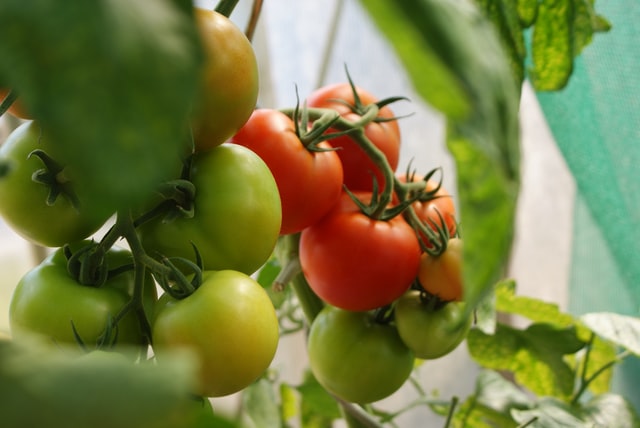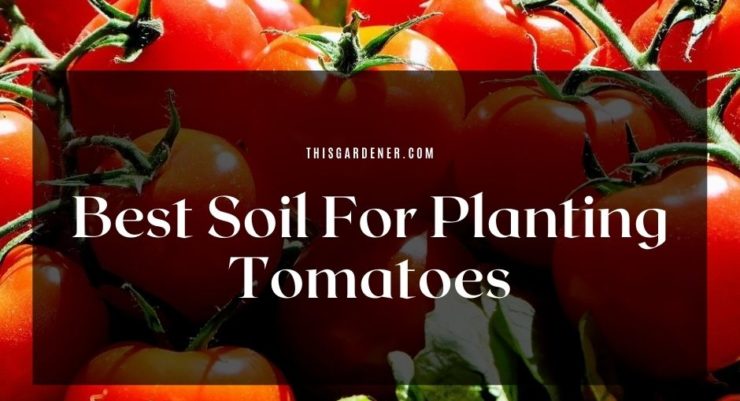If you plan to eat healthily, then tomatoes are unavoidable. Buying then can put a dent in your pocket as time passes, which is why most people prefer to plant tomatoes themselves. However, there are many stories of gardeners who simply couldn’t get it right due to a lack of ample knowledge relating to planting tomatoes. One of the things you need to know is precisely how to prepare the soil and the best soil for planting tomatoes; this offers you more success with your tomato planting. If you’re one of those who are clueless on how to prepare the soil for planting tomatoes, you’re on the right page.
By the time this article rounds up, you’ll be well aware of:
- The best soil for planting tomatoes
- How to successfully prepare the soil for planting tomatoes
Now that we’re on the same page, let’s dive right in.
Contents
The Best Soil for Planting Tomatoes
Generally, many opine that the best soil for tomatoes is loose, loamy soil. We picked the Fox Farm Organic Potting Soil as the best soil for tomatoes since it is loamy. It requires no mixing whatsoever, has a fantastic pH, and releases its organic nutrients slowly.
Read our review of the best soil for tomatoes, especially if you want to grow your tomatoes in raised beds or containers.
The flavor of the tomato depends on the soil in which it is grown; it should however be known that tomatoes will thrive in all soil types with the exception of heavy clay. The best soil to go with is the loamy soil, it is rich in humus, and although sandy, loamy soil is also ideal, they do not offer the developed flavor present in a loamy soil. Loamy soil is ideal not just because they contain humus but because they also retain water well, and tomatoes do not excel in dry soil.

How to Prepare The Soil for Planting Tomatoes
Now that you’re well aware of the best soil for planting tomatoes and you’ve picked the right spot for planting your tomatoes, the next step would be preparing the soil, and the steps below are how you can successfully achieve that.
1. Check out the Sunlight
Tomatoes love sunlight, so the first step you need to take is checking if the location allows the soil to get just enough sunlight. There is a need for about six hours of sunlight every day if you’re growing potatoes. Any less and your tomatoes may not turn out large and healthy; most people do not recognize the importance of this.
2. Tilling the Bed
Weeks before planting takes place, check your chosen plot, and ensure it is dry enough for tilling. Prepare the soil by cultivating the bed, remove existing debris, and break up soil clods work in compost into 8 inches of the cultivated bed.
3. Cover the Soil
Tomatoes prefer warmth, so ensure you cover the soil so that it can be warm before the planting. You can make use of black plastic as it is known to absorb heat from the sun and, therefore, speed up the warming process.
4. Test the Soil
You will then need to check the nutrient and chemical content of the soil by testing it. You can take a simple soil test to determine where amendments are needed; soil testing kits can be bought online easily or at a gardening store.
5. Check out the Soil pH
When you carry out soil testing, you will be made aware of the soil pH. The neutral level of pH is 7.0; higher indicates an alkaline soil, and lower indicates an acidic soil. Tomatoes prefer acidic soil, so ensure the pH level is between 6.5 and 7.0. If it falls higher or lower, then you might need to make some adjustments.
6. Modify Nutrients
When you carry out the soil test, ensure there is a balance between the potassium, phosphorus, and nitrogen in the soil. They are all vital to a successful tomato production. If there is no balance achieved, then make some modifications.
- How to Get Potatoes to Sprout Eyes: Detailed Growing Guide with 3 Options - July 31, 2023
- Weight of a Medium Potato: Revealed in Detailed Guide - July 29, 2023
- Maris Piper Potatoes: 9 Substitutes You Should Know About - July 27, 2023
Hello! I’m Jessica Zander, a garden coach and consultant based in the Boston area (zone 6b), offering virtual consultations across the country and Canada.
I’ve been passionate about gardening since the early 1990s, and in 2022, I launched You Can Do It Gardening to empower individuals to feel more confident in their gardening endeavors.
Following a 30-year career in nonprofit finance and operations, I transitioned out of that field in mid-June of 2023 due to the growing demand for coaching services. Interestingly, my years of presenting financial statements to boards and finance committees proved to be valuable experience for teaching people about gardening! I enjoy sharing skills, providing guidance and suggestions, and collaborating efficiently with clients to make significant improvements to their outdoor spaces, both small and large. I also regularly teach at the Arlington Continuing Education and Cambridge Adult Education.
My approach is direct and practical, akin to Mary Poppins, but tailored to your garden. Clients find satisfaction in saving money and taking pride in their own gardening achievements.


Add comment